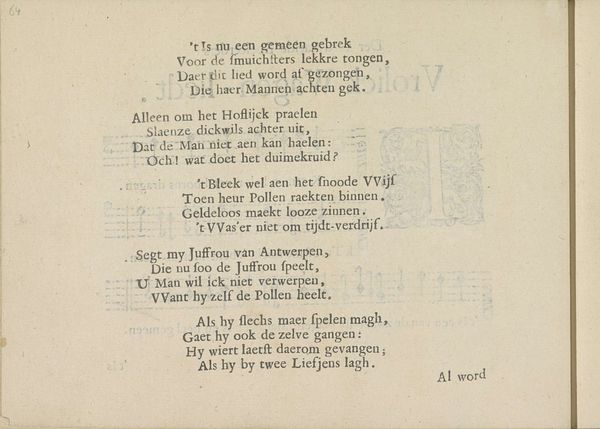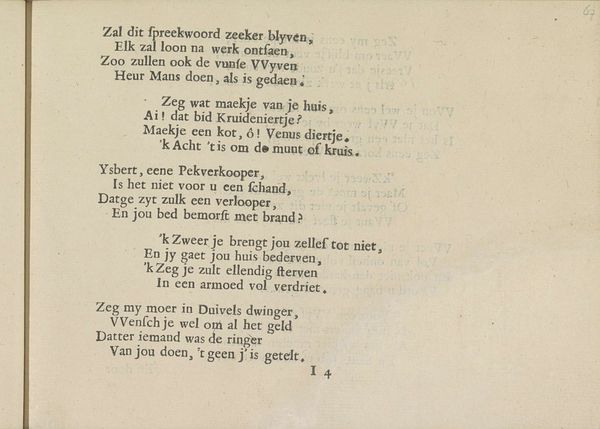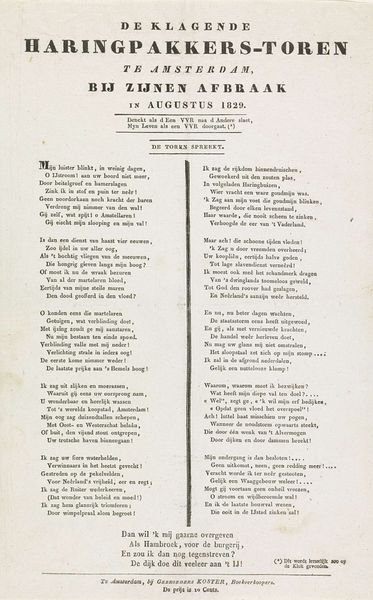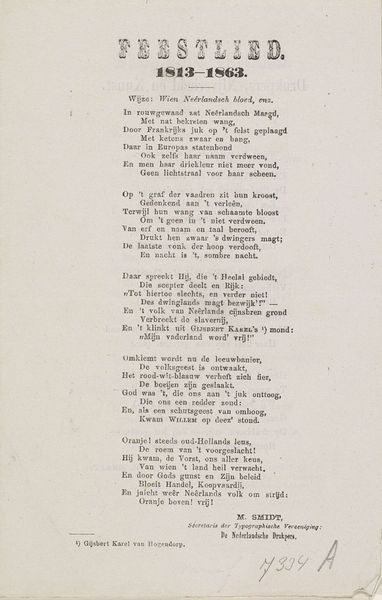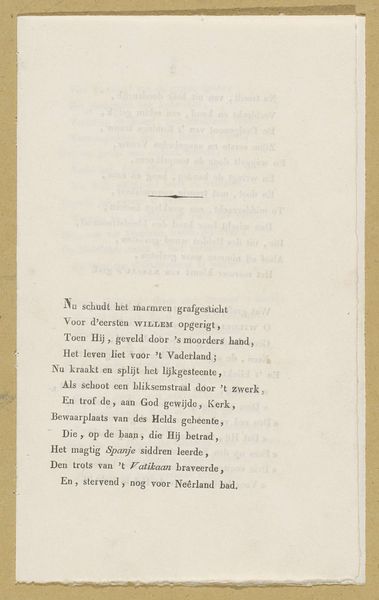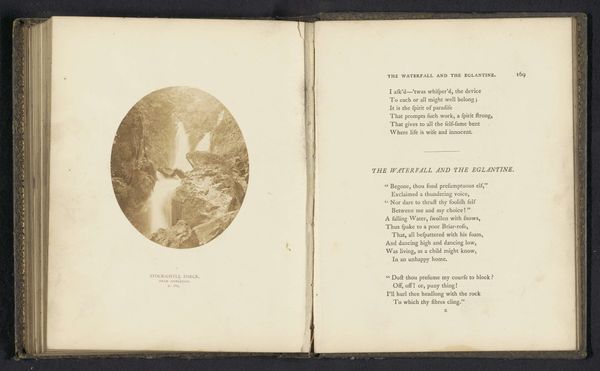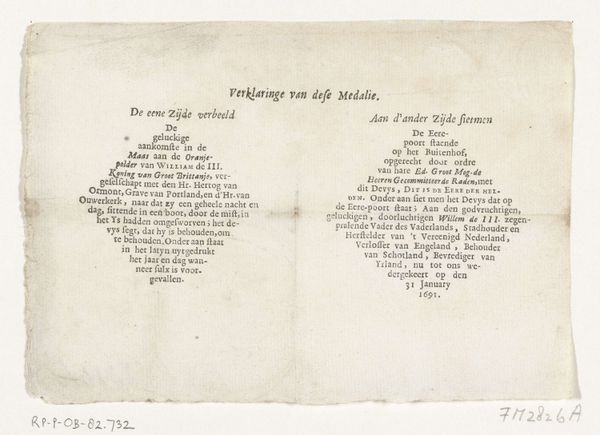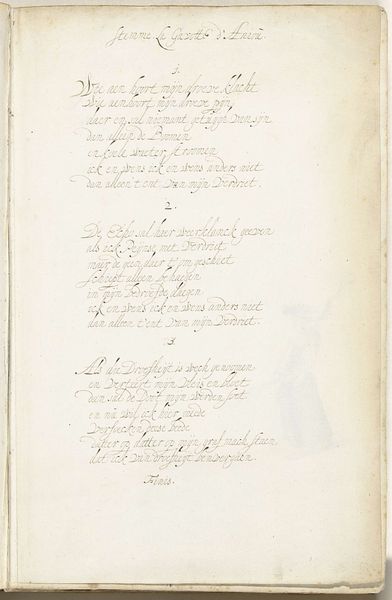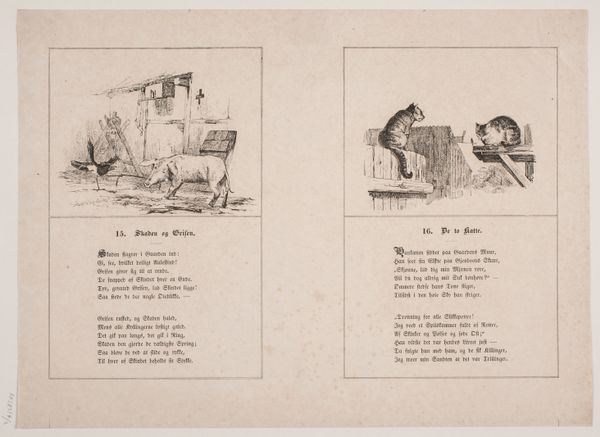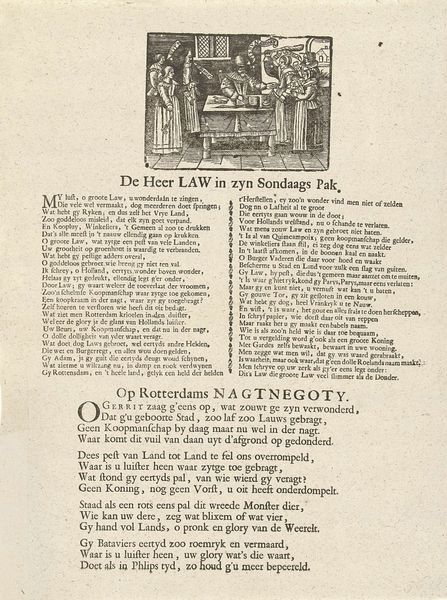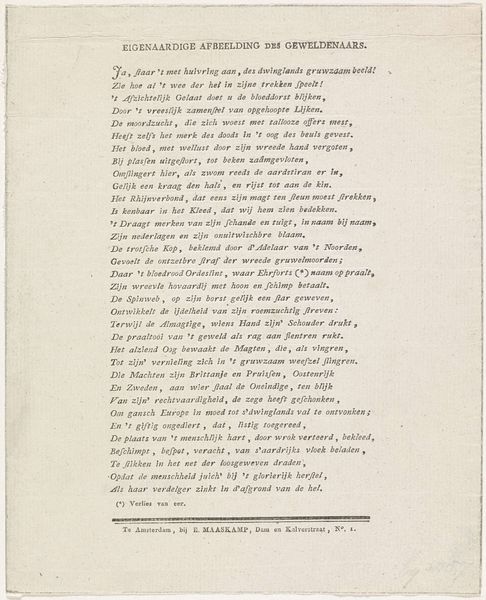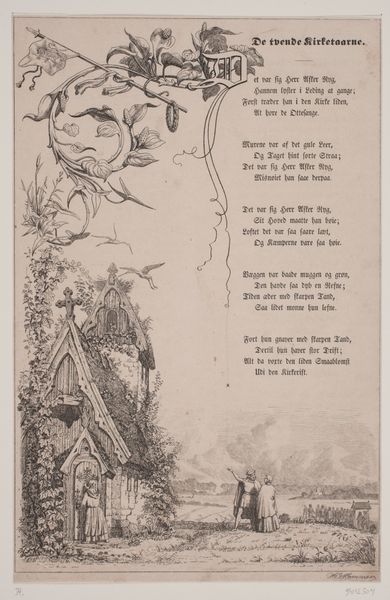
graphic-art, print, typography
#
graphic-art
# print
#
typography
Dimensions: height 140 mm, width 190 mm
Copyright: Rijks Museum: Open Domain
This is page 6 of "Wagenlied," made by Crispijn van de Passe the Younger, sometime in the 17th century. The primary symbol here is not visual, but linguistic. In the text, the word "VVyf," or wife, appears repeatedly. This word carries immense cultural weight, reflecting societal attitudes towards marriage, gender roles, and domestic life in the 17th century. In medieval and early Renaissance art, the representation of women often oscillated between idealized virtue and cautionary tales of vice. The "VVyf" as a symbol is laden with expectations of domesticity and obedience, yet also carries the potential for subversion, reflecting the era's complex and often contradictory attitudes toward women. We can trace its echo through time—the long-suffering Griselda in Boccaccio's *Decameron*, for instance, embodying patience, yet critiquing the power dynamics of marriage. The resurgence of this symbol across centuries reveals how societal expectations of women are both deeply ingrained and subject to reinterpretation. This page of Wagenlied serves as a reminder of the enduring yet evolving narratives that shape our understanding of women.
Comments
No comments
Be the first to comment and join the conversation on the ultimate creative platform.
